 Halfway through filming on the Star Trek pilot episode, The Cage, the attention of the show’s producers turns to the music for the pilot, and possible composers. Among the composers approached but unable to commit to Star Trek are Jerry Goldsmith (later to score 1979‘s Star Trek: The Motion Picture), John Williams (later of Star Wars and Lost In Space fame), Lalo Schifrin (Mission: Impossible), Elmer Bernstein, and Dominic Frontiere (The Outer Limits); a young composer named Alexander Courage, whose schedule is open, is considered especially promising.
Halfway through filming on the Star Trek pilot episode, The Cage, the attention of the show’s producers turns to the music for the pilot, and possible composers. Among the composers approached but unable to commit to Star Trek are Jerry Goldsmith (later to score 1979‘s Star Trek: The Motion Picture), John Williams (later of Star Wars and Lost In Space fame), Lalo Schifrin (Mission: Impossible), Elmer Bernstein, and Dominic Frontiere (The Outer Limits); a young composer named Alexander Courage, whose schedule is open, is considered especially promising.

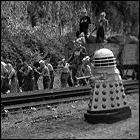 The 49th episode of Doctor Who airs on the BBC. This is part four of the story now collectively known as
The 49th episode of Doctor Who airs on the BBC. This is part four of the story now collectively known as 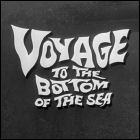 The 14th episode of Irwin Allen’s adventure series Voyage To The Bottom Of The Sea airs on ABC, starring Richard Basehart and David Hedison. June Lockhart (one of the stars of Allen’s latest series Lost In Space) guest stars.
The 14th episode of Irwin Allen’s adventure series Voyage To The Bottom Of The Sea airs on ABC, starring Richard Basehart and David Hedison. June Lockhart (one of the stars of Allen’s latest series Lost In Space) guest stars. Following up on preliminary studies assuming almost-Earthlike conditions, NASA commences work on a major robotic interplanetary landing mission called Voyager, which will use a Saturn IB rocket to send an orbiter with two landers to Mars. But NASA is doing so without much help from its usual interplanetary think-tank, Jet Propulsion Laboratory, whose scientists warn NASA that the latest astronomical data suggests a significantly thinner atmosphere and lower atmospheric pressure than the scenario for which NASA is designing its vehicles. As the complexity involved in creating self-guided landers with on-board laboratories increases, contractors begin to insist that only a Saturn V will do; since all Saturn V boosters are currently in reserve for Apollo lunar missions, NASA pushes the Voyager mission back into the 1970s.
Following up on preliminary studies assuming almost-Earthlike conditions, NASA commences work on a major robotic interplanetary landing mission called Voyager, which will use a Saturn IB rocket to send an orbiter with two landers to Mars. But NASA is doing so without much help from its usual interplanetary think-tank, Jet Propulsion Laboratory, whose scientists warn NASA that the latest astronomical data suggests a significantly thinner atmosphere and lower atmospheric pressure than the scenario for which NASA is designing its vehicles. As the complexity involved in creating self-guided landers with on-board laboratories increases, contractors begin to insist that only a Saturn V will do; since all Saturn V boosters are currently in reserve for Apollo lunar missions, NASA pushes the Voyager mission back into the 1970s.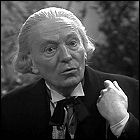 The 50th episode of Doctor Who airs on the BBC. This is part five of the story now collectively known as
The 50th episode of Doctor Who airs on the BBC. This is part five of the story now collectively known as 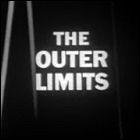 ABC airs the 45th episode of Leslie Stevens’ anthology series The Outer Limits. Ron Randell and Constance Towers star.
ABC airs the 45th episode of Leslie Stevens’ anthology series The Outer Limits. Ron Randell and Constance Towers star. The 51st episode of Doctor Who airs on the BBC. This is part six of the story now collectively known as
The 51st episode of Doctor Who airs on the BBC. This is part six of the story now collectively known as 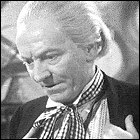 The 52nd episode of Doctor Who airs on the BBC. This is part one of the story now collectively known as
The 52nd episode of Doctor Who airs on the BBC. This is part one of the story now collectively known as 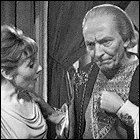 The 54th episode of Doctor Who airs on the BBC. This is part one of the story now collectively known as
The 54th episode of Doctor Who airs on the BBC. This is part one of the story now collectively known as 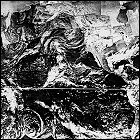 NASA and the United States Weather Bureau launch the ninth experimental TIROS weather satellite, TIROS-9. Heavier than any of the other TIROS experimental satellites, and with cameras mounted on opposite sides of the satellite’s cylindrical body to keep the Earth in view at all times. The result, in February, is the first-ever snapshot of the entire world’s weather patterns within a single day. TIROS-9 also carries other upgrades being considered for an upcoming fleet of full-time operational weather satellites, and remains in service for three and a half years.
NASA and the United States Weather Bureau launch the ninth experimental TIROS weather satellite, TIROS-9. Heavier than any of the other TIROS experimental satellites, and with cameras mounted on opposite sides of the satellite’s cylindrical body to keep the Earth in view at all times. The result, in February, is the first-ever snapshot of the entire world’s weather patterns within a single day. TIROS-9 also carries other upgrades being considered for an upcoming fleet of full-time operational weather satellites, and remains in service for three and a half years.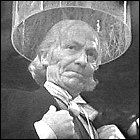 The 58th episode of Doctor Who airs on the BBC. This is part one of the story now collectively known as
The 58th episode of Doctor Who airs on the BBC. This is part one of the story now collectively known as 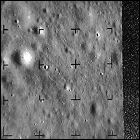 NASA launches the Ranger 8 lunar probe, built by Jet Propulsion Laboratory and intended to go directly to the moon, transmitting pictures of the surface back to Earth until it impacts the lunar surface. Ranger 8 functions flawlessly, sending pictures back to Earth until it slams into the Sea of Tranquility at high speed. Over 7,000 photos are returned, with the last complete picture transmitted prior to impact showing lunar surface features as small as five feet across.
NASA launches the Ranger 8 lunar probe, built by Jet Propulsion Laboratory and intended to go directly to the moon, transmitting pictures of the surface back to Earth until it impacts the lunar surface. Ranger 8 functions flawlessly, sending pictures back to Earth until it slams into the Sea of Tranquility at high speed. Over 7,000 photos are returned, with the last complete picture transmitted prior to impact showing lunar surface features as small as five feet across.